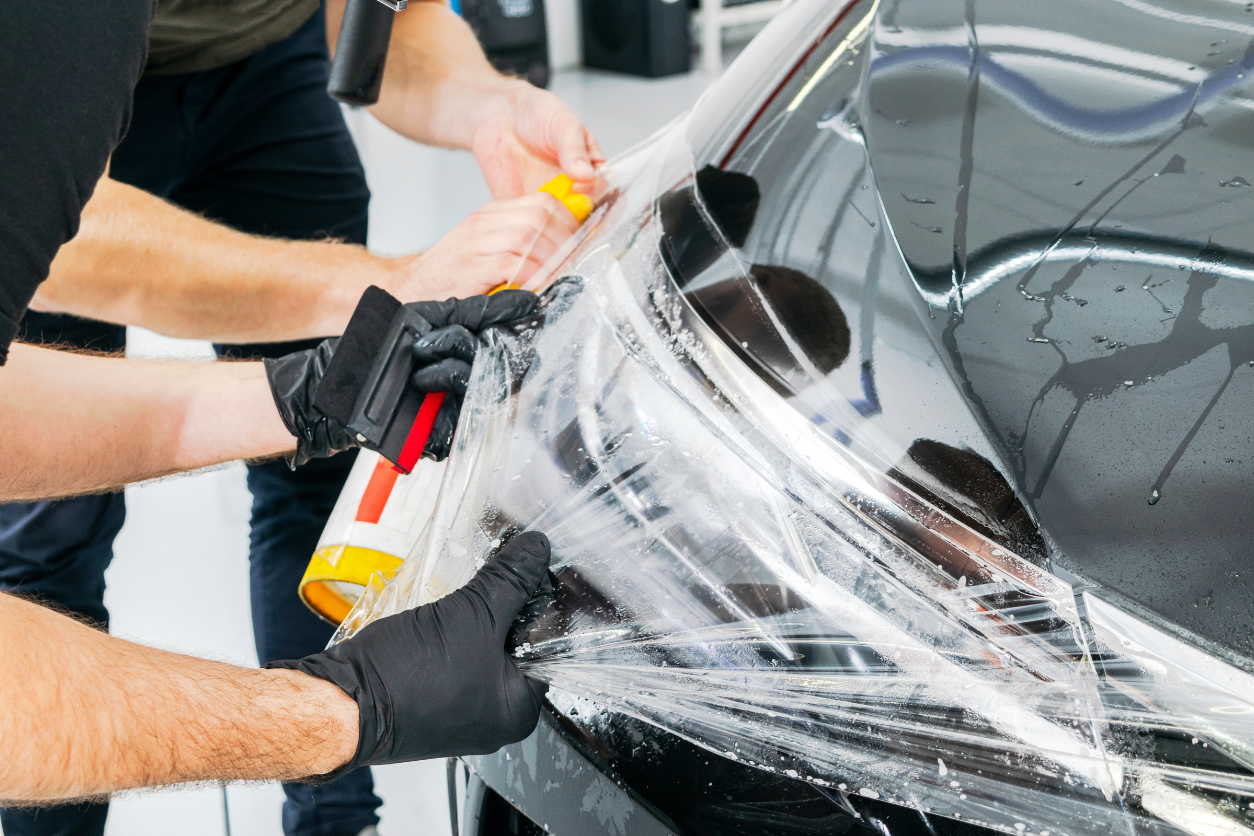The Science of Paint Protection Films in Detailing

In the world of automotive care, paint protection films (PPFs) have emerged as a must-have for those looking to preserve the pristine appearance of their vehicles. These films offer a sophisticated layer of protection against everyday hazards like scratches, chips, and environmental damage. But what makes them so effective? Understanding the science behind PPFs reveals why they are essential in modern car detailing.
The Composition of Paint Protection Films
At the heart of every effective PPF is its composition. Most PPFs are made from thermoplastic urethane, a polymer known for its flexibility, durability, and resilience. This material is carefully engineered into a multi-layered film, each layer contributing to the overall protective properties.
- Topcoat Layer: This is the outermost layer, and it often features self-healing properties. The science behind self-healing is fascinating: the topcoat is engineered to “heal” minor scratches and swirl marks when exposed to heat, such as from the sun or warm water. This is due to the elasticity of the urethane, which allows it to flow back into its original shape, effectively erasing the scratch.
- Polyurethane Layer: Beneath the topcoat lies the bulk of the film—the polyurethane layer. This is where most of the heavy lifting happens. Polyurethane is known for its ability to absorb impacts. When small rocks or debris hit the car, this layer dissipates the energy across the surface, preventing chips and scratches from reaching the paint. Additionally, this layer offers protection against harmful UV rays, which can cause paint to fade over time.
- Adhesive Layer: The final layer is the adhesive, which is crucial for ensuring the film stays in place. This layer is designed to bond securely to the vehicle’s paint without causing damage. High-quality PPF adhesives are also engineered to be removable without leaving residue, making it possible to replace or remove the film without harming the underlying paint.
The Benefits of PPF in Detailing
PPFs provide a range of benefits that extend beyond mere protection. For car enthusiasts and everyday drivers alike, these films offer peace of mind by maintaining the aesthetic appeal and resale value of their vehicles.
- Scratch and Chip Resistance: The most obvious benefit of PPF is its ability to prevent scratches and chips. Whether it’s from gravel on the highway or a careless shopper’s cart in the parking lot, the film acts as a sacrificial layer, taking the hit so your car’s paint doesn’t have to.
- UV Protection: Over time, exposure to the sun’s ultraviolet rays can cause car paint to oxidize and fade. PPFs block these rays, keeping the paint looking vibrant and new for longer periods. This is especially important for cars that spend a lot of time outdoors.
- Chemical Resistance: PPFs also protect against chemical stains from bird droppings, tree sap, and even acidic rain. These contaminants can etch into unprotected paint, causing permanent damage. The film’s surface is engineered to resist such chemical reactions, making it easier to clean and maintain.
- Hydrophobic Properties: Many modern PPFs come with hydrophobic properties, meaning they repel water. This causes water to bead and roll off the surface, taking dirt and grime with it. This not only keeps the car cleaner but also reduces the frequency of washes, making maintenance easier.
Installation Techniques and Considerations
Proper installation of PPFs is crucial to their effectiveness. While some car owners attempt to apply the film themselves, professional installation is often recommended to ensure a seamless fit and maximum protection.
- Surface Preparation: Before applying the film, the car’s surface must be meticulously cleaned and prepared. Any dirt, wax, or residue can interfere with the adhesive, leading to bubbles or peeling.
- Application Process: The film is usually applied wet, allowing the installer to reposition it as needed before it adheres. The use of specialized tools ensures that the film is applied smoothly, with no air bubbles or wrinkles.
- Edge Sealing: To prevent the film from peeling over time, edges may be sealed with a special solution that enhances adhesion. This step is particularly important in areas that experience high wear, such as the hood or front bumper.
The Evolution and Future of PPF Technology
The technology behind PPFs has advanced significantly since their inception. Originally developed for military use to protect helicopter blades, PPFs have since evolved into high-tech products tailored for automotive use.
- Nanotechnology: Recent developments in nanotechnology have allowed for even thinner films that offer superior protection. These nanofilms are designed to be more resistant to scratches, chemicals, and UV rays while remaining almost invisible.
- Self-Healing Improvements: While current PPFs offer self-healing properties, future innovations are expected to enhance this feature, making the healing process faster and more effective even at lower temperatures.
- Eco-Friendly Options: As environmental concerns grow, the development of eco-friendly PPFs that use sustainable materials and manufacturing processes is on the horizon. These films aim to provide the same level of protection while reducing the environmental impact.
Conclusion
Paint protection films represent a perfect blend of science and technology in the world of automotive detailing. With their ability to shield vehicles from the elements, enhance appearance, and preserve value, PPFs have become an indispensable tool for car owners who want to keep their vehicles looking their best. As technology continues to advance, we can expect PPFs to offer even more impressive features, ensuring that they remain a cornerstone of car care for years to come.